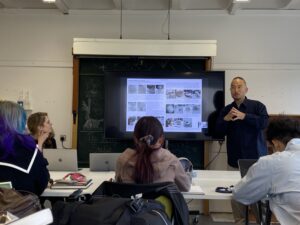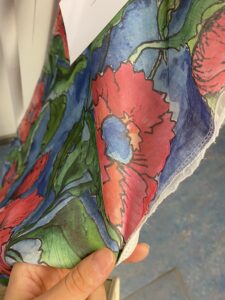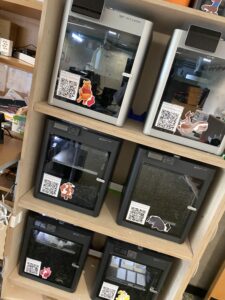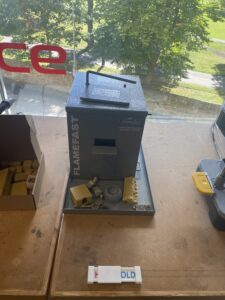Week 1 – Introduction & Self-reflection
In the first class, Jennifer and Choi gave a general introduction to the course content and structure. After the course briefing, we each introduced ourselves.
- About Me
I did not go to art college before, but I’m self taught and have experience in producing BJDs, art dolls, articulated realistic figures, and film and television merchandise, as well as experience in the film and television industry. I started my business of doll crafting many years ago and have a craft studio , My main interest lies in integrating cross-industry, cross-disciplinary, and cross-field technologies to achieve hybrid practices, technological innovation, and critical reflection on current production methods. While ensuring the quality of craftsmanship and maintaining a high level of aesthetic value, I aim to significantly increase the efficiency of art doll production, industrialize much of the manufacturing process (i.e., combining handcraft and machine-making, with handcraft still remaining the core), and reduce production costs. In this way, high-end art dolls such as BJDs would no longer remain luxury items but become art toys that people are easier to own—similar to what PopMart (a Chinese company specializing in art toys, best known for “Labubu” ) has achieved: transforming once niche art toys into something popular and widely owned. In doing so, such creations could also meet the growing spiritual needs of a broad audience—particularly women—by offering forms of emotional companionship.
Even in the future, I hope this craftsmanship could be applied to the AI industry, for example in the form of desktop companion-type humanoid robots. I have observed that in China, young start-up teams are already developing such projects and attracting considerable attention; however, I personally believe there is still room for improvement in terms of craftsmanship and design.
Through this course, I hope to develop both theoretical and practice-based insights into craft especial the making of various life-like human figures, and I am looking forward to experimenting with new forms and methods of design and critical practice.
Presentation of some previous works:

- Some thoughts and reflections
During the Icebreaker exercise, each of us introduced our backgrounds and areas of interest. My classmates came from various disciplines such as glass, textiles, jewellery, ceramics, and product design — most of which are strongly rooted in handcrafted practices.
Since I joined the programme with a clear entrepreneurial project, specific goals, and problems I want to solve, I focused particularly on the challenges I had encountered in BJD production — especially the issues of handcrafted mass production and collectors’ pain points.
I raised a question in class about whether there is a fundamental conflict between mass production and craft. Jennifer said that it was a profound topic, while Choi mentioned that if mass production aims to reproduce and promote such beautiful handmade craftsmanship, then the two are not in conflict. Their responses reassured and encouraged me a lot. However, I still felt uncertain and doubtful about whether my research direction truly fits within the Craft MA programme. At the same time, I started to understand the commercialisation of crafts from a fine art perspective.
Later, during the Workshop/Maker Space Campus Tour, we visited ECA Main Building’s Wood, Metal, Glass, Ceramics studios, as well as the Hunter Building, Bookit Central, Maltings, and U-Create. I realised that many of these studios are directly or potentially connected to my project, especially U-Create, where I found the technologies and machines I had been looking for. At that moment, I felt once again that I had chosen the right programme.





